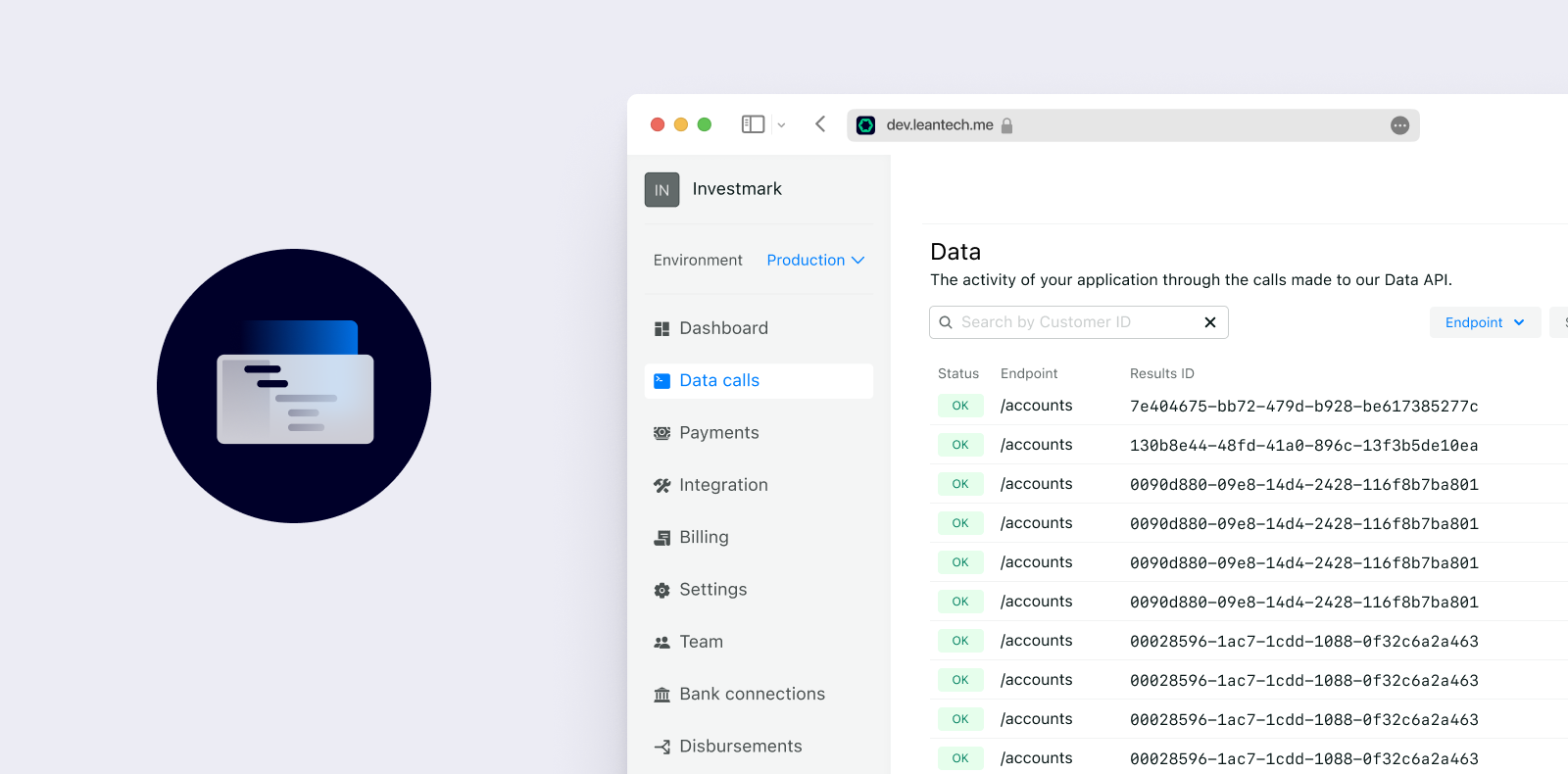Fetching Bank Data

Before you get started
In order to get data from a connected account you first need to have the following:
- Implemented Authentication to Lean's APIs
- Created a Customer.
- Connected an Entity with the correct permissions for the data type you are requesting.
How account data is structured
flowchart TD
%% Nodes
A("Customer")
B("Entity (Bank A)")
C("Entity (Bank B)")
D("Accounts")
E("Identity")
F("Savings Account")
G("Current Account")
H("Balance")
I("Transactions")
%% Edge connections between nodes
A --> B & C
B --> D & E
D --> F & G
F --> H & I
Making your first API call
With an Entity set up, the first API to call will normally be the /accounts endpoint. This simple GET request returns a list of the available accounts to query.
Let's look at a simple function to call the Accounts API and store all of the Accounts in a storedAccounts variable.
const express = require('express');
const fetch = require('node-fetch')
const app = express()
app.use(express.json())
const fetchAccounts = async (entityId) => {
let storedAccounts;
// fetch accounts from the /accounts endpoint
try {
var accounts = await fetch(`https://sandbox.leantech.me/data/v2/accounts?entity_id=${entityId}`, {
method: 'GET',
headers: {
'Authorization': env.LEAN_BEARER_TOKEN
}
})
var json = await accounts.json();
storedAccounts = await json.payload.accounts;
} catch (e) {
console.log(`error: ${e}`)
}
// return the accounts values
console.log('ACCOUNTS: ', storedAccounts)
return storedAccounts
}Getting financial account data
Now that you have a list of accounts - and importantly, their id's you can make further requests for the transaction history and balance of the account.
const updateBalances(entityId, storedAccounts) {
for account in storedAccounts {
try {
var balance = await fetch(`https://sandbox.leantech.me/data/v2/accounts/${account.id}/balance?entity_id=${entityId}`,
{
method: 'GET',
headers: {
'Authorization': env.LEAN_BEARER_TOKEN
}
})
var json = await balance.json();
console.log('balance in ', account.nickname, ' = ', balance[0].amount.amount, balance[0].amount.currency
} catch(e) {
console.log('balance request failed error', e)
}
}Updated 3 months ago
What’s Next
